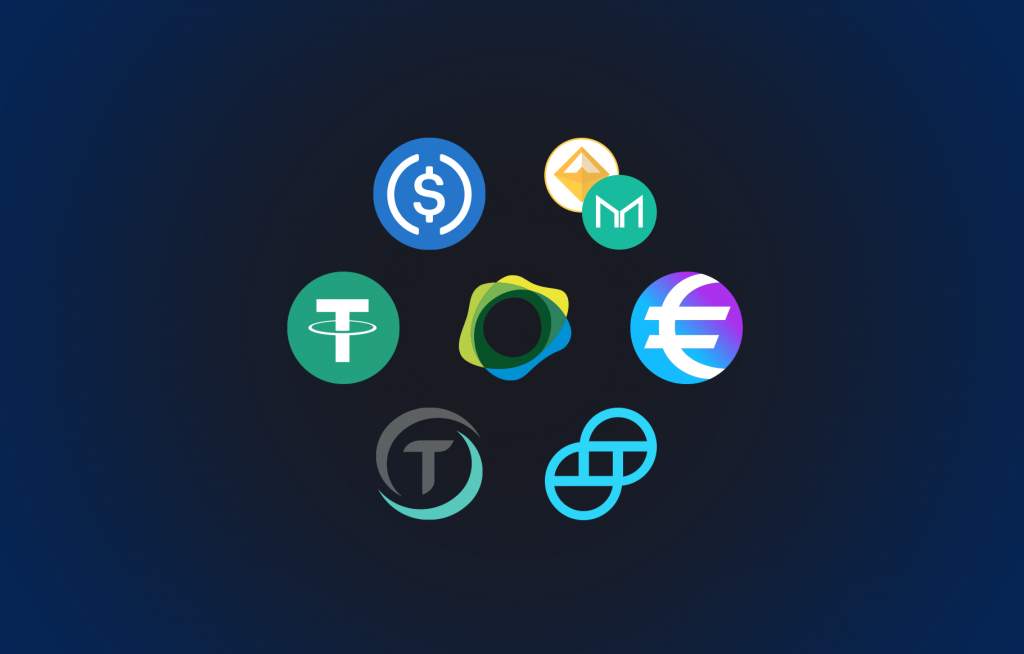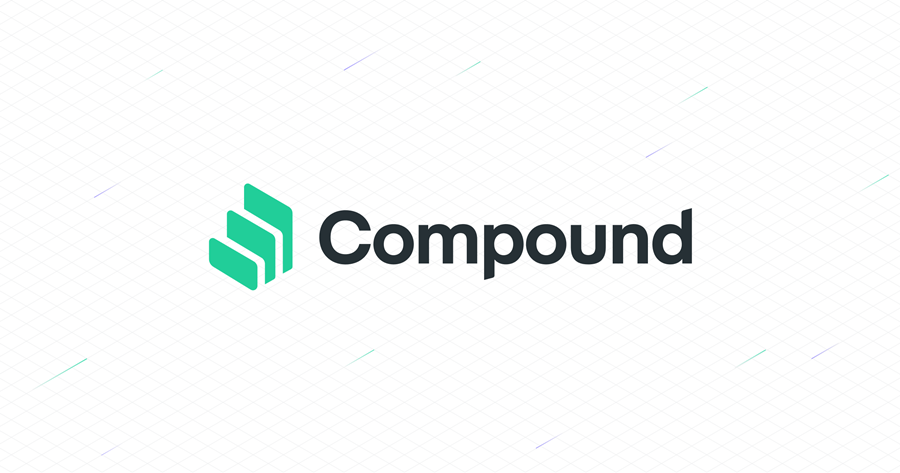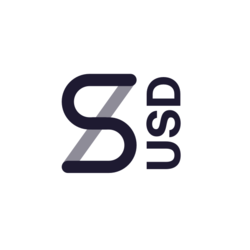
Curve is a decentralized exchange (DEX) designed for efficient stablecoin trading. It is like Uniswap in that it uses liquidity pools, it’s non-custodial, and it rewards its liquidity providers. However, because Curve focuses solely on stablecoins, it costs less to use.
Curve vs. Uniswap
Stablecoins are traded directly against each other on Curve. Furthermore, that is one of the most significant differences between it and Uniswap. If you want to trade between a pair of stablecoins on Uniswap, two trades must occur:
- Stablecoin #1 gets traded for Ethereum (ETH).
- ETH gets traded for Stablecoin #2.
So, as a trader, you will accrue double trading fees. And while Curve has similar benefits as Uniswap for liquidity providers, it’s not subject to the degree of “impermanent loss.” That’s because Curve only trades between stablecoins, whilst Uniswap trades directly against ETH. And ETH’s volatility can wreak havoc on Uniswap’s liquidity providers.

In other words, you can lose money if ETH’s price moves away from its price point when liquidity was provided. You would have been better off holding ETH directly in that case. However, if ETH’s price returns to the original entry point, the loss goes away. That’s why it’s called an impermanent loss rather than a “permanent” one.
Liquidity providers don’t have this problem on Curve because stablecoins aren’t going to fluctuate like ETH. This is why some call Curve a “better Uniswap built for stablecoins.”
Stablecoins
Stablecoins play a vital role in decentralized finance (DeFi) these days, particularly with the introduction of Yield Farming. There is a bigger demand now for trading between pairs of stablecoins, and that’s where Curve comes into play.

Sure, you can still trade stablecoins on a popular centralized exchange (CEX) or a DEX, but you will pay higher fees and slippage. Curve has an advantage over these in that you can trade between pairs of stablecoins quickly and for less money.
How Liquidity Providers Earn Money
Liquidity pools are pools of tokens that reside in smart contracts. They are created by the liquidity providers who supply the tokens. Curve incentivizes these suppliers by rewarding them in different ways:
- Trading Fees: Liquidity providers earn fees each time a user exchanges stablecoins on their platform. All of Curve’s pools earn interest from trading fees.
- Interest: Some of the pools offer interest from lending.
- Incentives: Some of the pools provide incentives as well.
- Bonuses: By providing a particular token to a liquidity pool that has a low share, you can earn a deposit bonus. This works the same way when you withdraw. You can earn a bonus if you withdraw a particular stablecoin that has overpopulated the pool.
Here’s a simple example of how a liquidity pool works.
Let’s say the pool starts with equal amounts of two stablecoins, 1,000 USD coins (USDC), and 1,000 Tether (USDT).

So, a trader comes in and exchanges 100 USDT for 100 USDC. Now the pool contains 1,100 USDT and 900 USDC. Then another trader comes in and exchanges 300 USDT for 300 USDC. Now the pool is getting lopsided with 1,400 USDT and only 600 USDC. If the liquidity pool’s goal is to maintain equilibrium, an incentive would be baked into the smart contract to get traders to supply more USDC and buy more USDT to restore balance.
Curve’s Liquidity Pools
At present, Curve has seven liquidity pools. The first four (Compound, PAX, Y, and BUSD) are lending protocols. That means if you participate, you can earn money not only from trading fees but from lending as well. These four pools perform better when lending rates are high but they come with more layers of risk.
Two of the pools (sUSD and sBTC) offer incentives (Synthetix and Ren). They are not lending pools. There are also two tokenized Bitcoin pools (ren and sBTC).
Regardless of which pool you select, you will always earn interest from trading fees. Let’s look more closely at each pool and the stablecoins they offer.
Compound (cDAI, cUSDC)

This is the oldest pool on Curve noted by the letter “c” that precedes Compound’s native tokens. Stablecoins in this pool will only be lent on the Compound protocol.
- PAX (ycDAI, ycUSDC, ycUSDT, PAX)
- Y (yDAI, yUSDC, yUSDT, yTUSD)
- Y pools usually offer better returns and thus are inherently riskier. This is because you will be tapping into various other protocols that could have vulnerabilities.
- BUSD (yDAI, yUSDC, yUSDT, yBUSD)
- sUSD (DAI, USDC, USDT, sUSD)
- sUSD is a newer pool. It is one of the best performers because it is incentivized by Synthetix and REN. This is a non-lending pool and you earn rewards in SNX for sUSD.
- ren (renBTC, wBTC)
- The ren pool offers two versions of Bitcoin on Ethereum—renBTC and wBTC. renBTC is decentralized but fairly new. wBTC is not as decentralized but has a longer track record. The APY tends to be lower in this pool since Bitcoin on Ethereum is still new and volume isn’t that high yet.
- sBTC (renBTC, wBTC, sBTC)
- This is also a non-lending pool. Notice that sBTC is a synthetic version of Bitcoin. This pool offers the best returns on Bitcoin but comes with more risks.
Picking the Right Liquidity Pool
Providing liquidity is not risk-free. You’ll want to match your risk tolerance with the pool you’re selecting if you decide to become a liquidity provider on Curve. The percentages of tokens in that pool will determine how your deposit will be split up.
Let’s say you pick a pool with the percentage breakdown of stablecoins like this: USDT 20%, USDC 20%, DAI 50%, and TUSD 10%. If you deposit 1000 stablecoins, your lot will be split up accordingly:
200 USDT, 200 USDC, 500 DAI, and 10 TUSD.
Again, it’s important to pick a pool full of the tokens you feel comfortable with. This is because you will have exposure to every token in the pool regardless of which token you deposit.
Incentivized Pools
All in all, it’s never good for a so-called stablecoin to be bouncing all over the place. With a 1:1 dollar peg, even a few cents off like $0.97 looks bad to traders. So, liquidity pools are a great way to keep stablecoins on their peg.

sUSD
This is why the sUSD and sBTC pools are incentivized. Synthetix and Ren (at the time of writing) give rewards to liquidity providers. These rewards are additional to trading and lending fees.
Curve Pool’s Risks and Rewards
To reiterate, rewards come from trading fees, interest, incentives, and bonuses. Every time a trade occurs on Curve, liquidity providers split a small fee amongst themselves. Trading fees are dependent on volume. So if you’re a liquidity provider, you can see high Annual Percentage Yield (APY) on days with high volume and high volatility. Likewise, since yields fluctuate on Curve, daily APYs can be quite low.

Since you will be exposed to any risks associated with the tokens inside the pool, you can mitigate some of it by spreading it around. In other words, you could provide liquidity to all the pools instead of just one. Just know that such a strategy will result in increased gas and slippage fees, not to mention more smart contract risks as their number will increase.
Bitcoin Pools
Rewards: You can earn trading fees only. APY is likely to be smaller until Bitcoin on Ethereum generates larger volumes. However, sBTC is one of the better performers. Risks: Smart contract issues with Curve and iEarn have been reported. There have also been systemic issues with wBTC, renBTC, and Synthetix (on sBTC pool only).

yPools
Rewards: This is one of the better performing pools along with sUSD.
Risks: The pools that use yTokens use the iEarn protocol. yToken providers need to monitor iEarn to reduce risk.
cPools
Risks: cToken providers need to watch Compound.
sUSD Pool
Rewards: This is one of the best performing pools due to its incentives (depending on market conditions).
Risks: There have been smart contract issues with Curve and some systemic issues with stablecoins and Synthetix. You will need to monitor Synthetix.
Profitable Liquidity Providers
When determining the potential for profitability, you must not forget to factor in the costs of paying gas and slippage fees. Curve integrates with external projects. And higher gas costs can result since liquidity is split across multiple pools. Also, depending on the tokens, there can be significant slippage at times.
Also, if you like to chase high yield by frequently changing pools you may be dissatisfied with Curve. You’ll need to keep your tokens supplied for an adequate amount of time. This is to make sure the returns outweigh the associated gas fees and slippage costs.
Governance Tokens CRV and YFI
Curve will be transitioning to (and may have already transitioned by the time of this article’s release) to a DAO (Decentralized Autonomous Organization).

Decentralized Autonomous Organization
Moreover, CRV will be the governance token. It will have value accrual and voting mechanisms built into it. However, there will be no initial coin offering (ICO). Instead, liquidity providers will be rewarded in CRV based on the amounts they provide.
The initial release will start at around 2 million CRV per day. The total supply (approximately 3 billion) will be distributed as follows:
61% to liquidity providers
31% to shareholders
5% to burnable reserves
3% to employees
YFI will be the governance token for the iEarn yield aggregator. YFI will allow its holders to make decisions as well as earn fees from the iEarn ecosystem. However, the token itself holds no value.
YFI’s staking contract works the same as Mintr. While both YFI and CRV are governance tokens, YFI will act as a reward for the yPool. So, if you provide liquidity to the yPool you can stake your liquidity provider tokens in the distribution contract’s interface and earn YFI.
Curve’s Place in DeFi
One of the great things about DeFi is its design. It works like Lego building blocks. Powerful new combinations of protocols are being put together all the time. And Curve has proven to be one of the great integrators. However, increased integration can lead to increased risk since you will be exposed to more protocols as you enter the fray. In other words, if you wish to provide liquidity on Curve successfully you will need to understand the other platforms it integrates with.

The good news is the protocols mentioned here have all been tested extensively. Also, Curve pools have held and moved millions around without hackers helping themselves to any of the spoils yet. And surely, it’s not for lack of trying with that kind of money at stake.
Curve Finance Conclusion
Curve seems safe enough for trading since that takes place in a single transaction. But liquidity providers may face higher risks. Yes, Trail of Bits has edited Curve’s smart contracts. But that doesn’t mean that security audits eliminate all risks. A vulnerability could still be lurking in the smart contracts in the form of an interface error. And the usual phishing attacks will undoubtedly plague users. If you want to use Curve, just make sure to bookmark the real curve.fi or beta.curve.fi site instead of following an email link.
The best way to learn DeFi solutions is to use them. This is not financial advice, but if you want to learn, go try out some different protocols. Curve is somewhat more difficult to master, so only test small amounts of tokens while you’re learning. The last thing you want to do is get greedy and over-extend yourself right out of the gate. Regardless if you heed this warning or not, you will need to put your “big boy pants” on whenever you trade. That’s the rule – especially when dealing with more advanced protocols like Curve. Don’t come back crying if you get greedy.
To learn more about Curve Finance and innovative DeFi in general, check out the DeFi 101 and DeFi 201 courses at the Ivan On Tech Academy. Ivan on Tech Academy is the best place to learn blockchain online – so why don’t you decide to join over 20,000 existing Academy alumni?
Author: MindFrac





